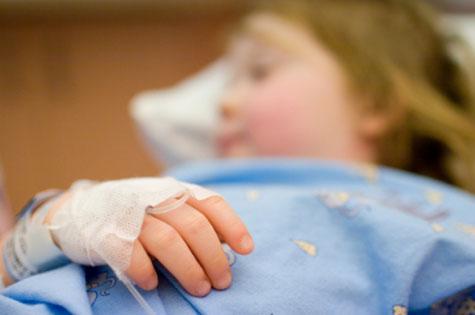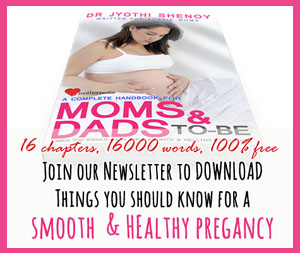This is hugely emotional topic, as I write this from personal experience. I’m not putting it out there as the last word, or basing it on research; it’s drawn from my experiences with a chronically ill child.
I consider myself extremely lucky that my child was only chronically ill and her life was never at risk from her condition. Although there was a distinct possibility that she would go blind, I came to be extremely grateful that blindness was the worst that could happen.
For those whose children are facing terminal and life-limiting diseases, I have no experience in this and can offer little in the way of advice except that my heart goes out to you and I have tears in my eyes just thinking about it. You are very brave and extraordinary people thrown into a situation that no-one would ever wish for. The most sobering time in my life was taking my daughter to a major children’s hospital for several rounds of day surgery and walking out of there thinking, “I am really lucky. My kid might go blind, but she ain’t going to die.” I felt a very, very lucky man.
Looking back on how my wife and I managed this difficult situation; there are things that we did that were excellent for our daughter, and then there are things that, frankly, helped destroy our marriage.
Sarah got Juvenile Arthritis at the age of two. Her knee blew up and it took one long, terrifying week to receive a diagnosis. We were facing a lot of very scary thoughts and when we finally got the diagnosis we celebrated with champagne that it was nothing terminal. Unfortunately as a result of this Sarah got the short straw and was one of the smaller group of kids who got Uveitis. Uveitis is a sneaky, nasty eye disease, which essentially has no symptoms, but if it isn’t caught early leads to almost certain blindness. Sarah got it at two and a half. It savagely attacked her eyes and I only picked up on it when I noticed that one of her eyes was dilated differently to the other while I was giving her a bath.
Within 24 hours she was in hospital getting steroidal injections in her eyes to try and reduce the swelling.
We got her through the rounds of day surgery and they got it under control. We were then faced with years of further attacks, which we treated as soon as we could to stop further damage to her eyes. The challenge is that there are no obvious symptoms to the disease, no signals and no pain to tell us that an attack was happening. We became very good mind readers! Actually, we became very good observers—out of seven times I took her to the specialist outside of her normal appointments suspecting she had an attack, I was right five of those times.
When this started we were given the statistic that 12% of kids go blind from Uveitis—which was completely unhelpful and has made me hate all statistics since.
We tried as hard as we could not to ‘medicalise’ our child. We refused to let this disease rule our lives, nor did we let Sarah feel sorry for herself or use it as an excuse to not do something. We worked very much on the basis that she was a “completely normal kid who happened to have sore eyes”, not “a sick kid who gets to do things when she can”.
To do this we did not use any medical jargon around her. We talked about her having “sore eyes” and needing to go to “Dr Eyes” to get them better. She never knew the name of her disease, nor really that she had one till she was seven or so. We normalised the visits to the doctor and did whatever we could to minimise the trauma of visits and painful eyedrops.
When she got attacks and we had to administer hourly, sometimes half hourly eye drops, we just kept doing what we were already doing, and every hour we walked up to Sarah and popped another eye drop in. Many beaches and playgrounds around us have witnessed a young child every hour or so being stopped to lie down and have eye drops put in, then carrying on with building her sandcastle or rowing her dinghy around the bay.
We did not let any family or friends express sorrow to her about the condition. Although well-meaning, the concerned old aunty swooping in, cooing and gushing about “how terrible it all is” was completely disallowed!
Nor did we let friends or relatives talk in “hushed whispers” about Sarah’s condition in her presence. We did not even let people ask her how her eyes were. As a result we minimised her fear and she grew up till at least 7 not really realising that it was much a of a big deal.
We learned a very sobering lesson in how much kids take their cue from you. We had to put on a brave face, and we discovered that this is what being a parent is all about - faking it when you really just want to crawl up into a little ball and cry your eyes out. If Sarah could see that we were OK about it all then she took that cue and figured that she would be OK to.
Also when we did get to the doctors and discovered that she had another attack, we never lamented with her, saying things like, “oh isn’t it terrible”, or “what a shame”. Much as we felt absolutely gutted every time we got a bad report – and we got a lot – we kept these feelings to ourselves and just got on with the new regimen of eye drops. Again, we had to be very clear to friends and relatives about this.
What would the message be to Sarah if we celebrated blatantly when there was no attack and got down in the dumps when there was one? She had no control over these, they were just part of her life and we couldn’t put our fears onto her.
Finally, the other thing we had to do was give Sarah some very nasty medicine. She ended up taking this foul tasting stuff for one and a half years. The first time she was given it via a syringe in the mouth, all the while struggling, she immediately vomited it all over me. I looked at her, even at the age of 3 and said, “OK we have to do this again until it goes down”. I got up and filled the syringe and gave her another dose. She was so shocked that she just took it and never again refused to take it. I am not sure whether this would work on all children, as she was amazing at taking all this horrible stuff, maybe we were just lucky.
Of course through all this, you do your deals with God. I was more than happy to go blind in place of my daughter, to suffer and take whatever she had to take. I railed against the Great Being, cursing and raging, “Why me?”
The answer came back eventually, “Why not you?”
I had no answer to this and realised that this was just part of my life.
While my wife and I did well as parents, as a couple in a relationship, we were completely crap. We were extremely good at producing a united face to Sarah and managed to share the workload pretty evenly. However approached the stresses of the situation in totally different ways. Sarah’s mum researched the disease on the internet, learned about all the risks and dangers and made sure she was knowledgeable about the latest medical advances and research. My sense was that she came to an acceptance that she could cope if the worst happened.
I, on the other hand, didn’t want to know any more about the disease than I already knew. I knew it was serious – that was all I needed to know. What I did want to know was what would cure it. There is no known cure, although the symptoms usually subside by the early to mid teens (which is what has now happened in Sarah’s case), however, I combed the field of alternative medicine to try and find an answer.
We tried lots of different things, and while we had some failures, some things did work, especially for the swollen knee joint. However this “experimentation” created some very challenging discussions between my wife and I. We finally negotiated a criteria for trying anything alternative, this included
- Anything we tried could not get in the way or hinder the mainstream medical treatment that Sarah was using;
- Sarah was not to know that we were trying something new;
- Sarah was not to go and see any more professionals, as she had seen so many already.
A mix of CMO and glucosamine eventually cured the knee joint, but nothing we tried had any effect on the eyes.
As far as the relationship between my wife and me was concerned, we did not talk about the disease with each other except in a functional way, and eventually we retreated into our own shells. The worst thing that we did for our relationship was that we never talked with each other about how scared we were, and just how appalling it is to watch your baby to go through all this. Instead, we did our own thing and inevitably our marriage crashed six years later. This was not the whole reason but personally, I think not supporting each other had a huge part to play. We both felt like islands and got into a terrible pattern of just getting on with things and not checking in with one another.
We paid a very high price for this.
My hints for maintaining your relationship while caring for a chronically ill child:
- Keep your relationship clearly in focus and work on it
- Talk honestly and often with your partner
- Get professional support for yourselves, both individually and as a couple
- Be open about your fear. It can be so debilitating and blocks so many conversations
- Respect each other’s opinions and approaches, and focus on the common ground
- Don’t retreat from each other
- Share the load
- Take a break together when you can
- Keep loving each other no matter what
Philip Pryor runs http://www.greatparentsinstitute.com.au and is a writer on parenting and relationship issues.















__small.png)










